After spending 6 days in Monticello, UT where we visited two of Utah’s five National Parks (Arches and Canyonlands), it was time to move on and visit our third National Park in Utah – Capitol Reef National Park.
We’d stayed overnight in Green River the night before to reduce how much we’d have to drive the next day. That’s because after visiting Capitol Reef we still had a long drive down to Kanab near the Utah/Arizona border.
I’m glad that we hadn’t decided to dedicate a lot of time to Capitol Reef National Park because although it’s pretty, it wasn’t very interesting and ended up being my least favorite of Utah’s five National Parks.
There are two sides to Capitol Reef – its history and its scenery. The first part of our visit primarily focused on its history, with one of the first things we saw being the Behunin Cabin. This one room cabin was built by Elijah Cutler Behunin in 1882, although they only lived there for less than a year. That’s because the nearby Fremont River flooded several times, wiping out their crops and destroying the irrigation systems that they’d set up.
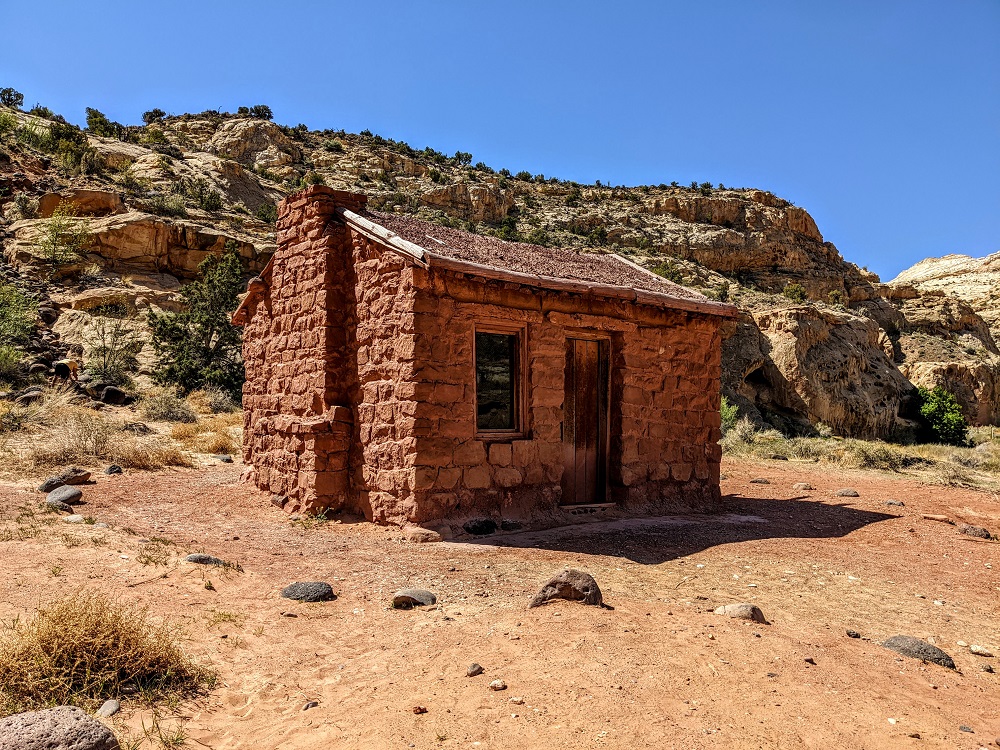
Next up was a stop in their visitor center where there were exhibits and information about rock formations in the park, history of the people who once lived there and more.

It was after midday at this point, so we stopped for lunch at the picnic tables next to the historic orchards. At certain times of the year you’re allowed in the orchards to pick fruit from the trees. Based on a sign outside the orchards, it seems like there are apples, peaches, apricots, pears, plums and cherries.
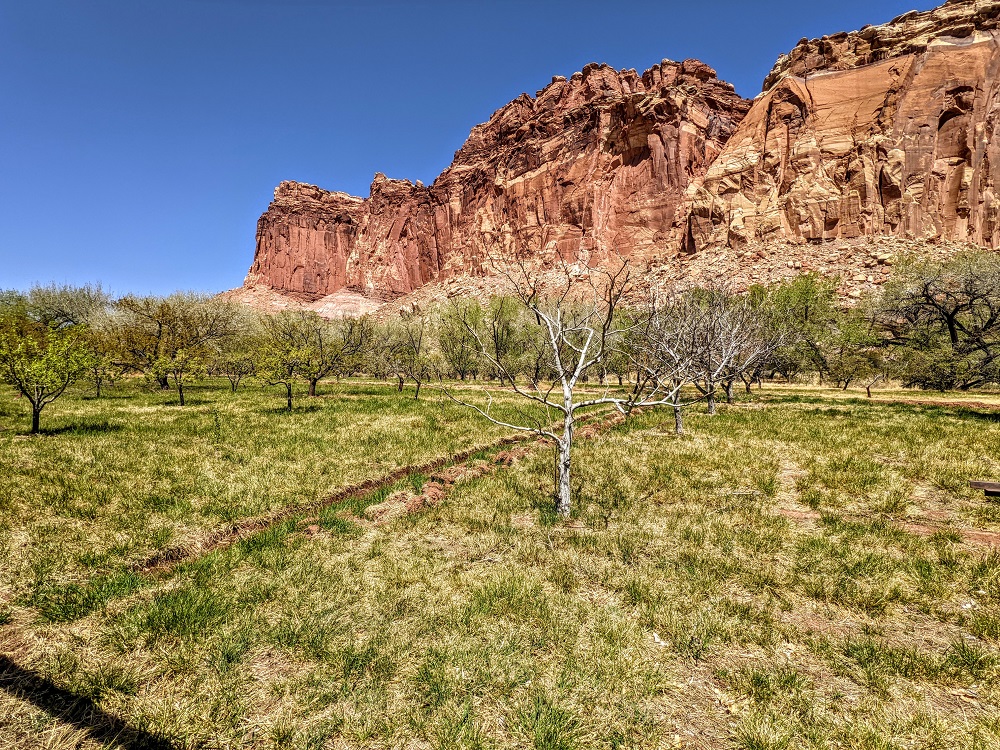
There’s a short trail past the orchards and up the road that leads to the old Fruita schoolhouse, Fruita being the ghost town in Capitol Reef National Park.

You can peer inside the windows of the one room schoolhouse to see what it would’ve once looked like. The Fruita schoolhouse was built in 1896 and had its last class taught there in 1941, with anything from 8-26 students across a range of ages being taught in the same room.
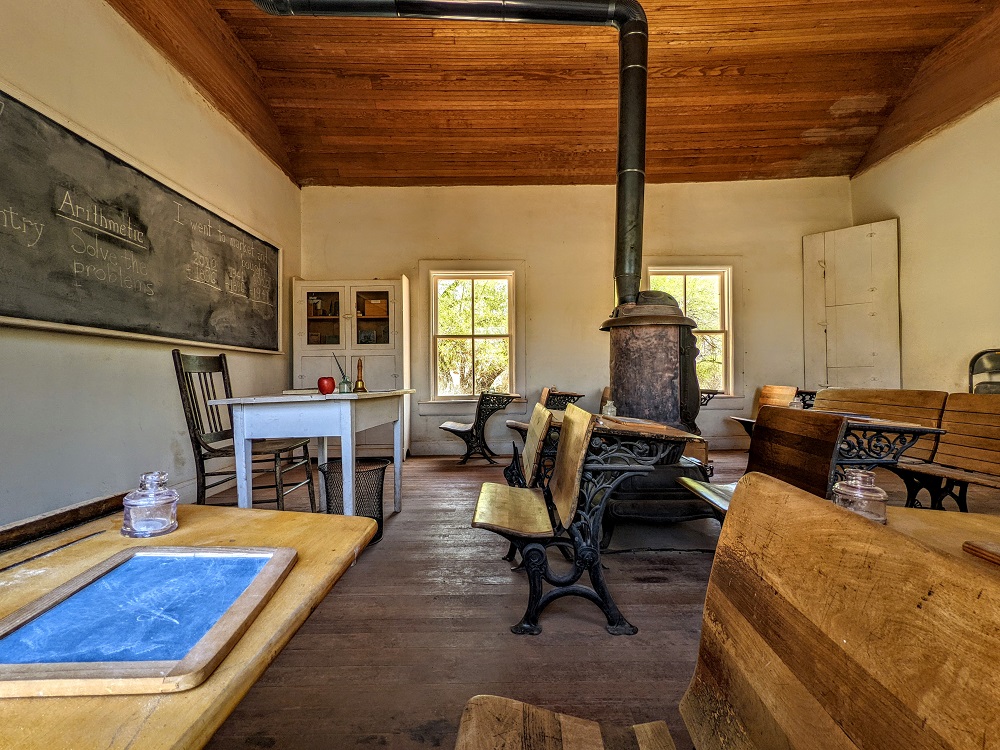
We walked back to our car at that point and then drove up the road to the Gifford Homestead. There was another large picnic space to the right of the house, so that can be a good place to stop for lunch too.
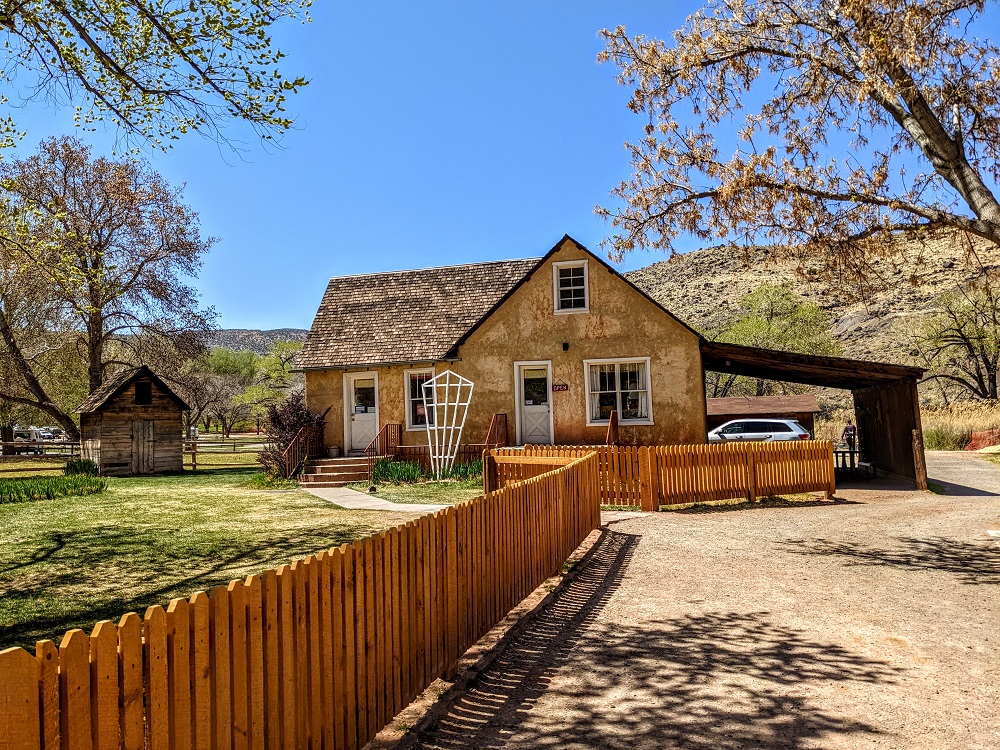
You can go inside the house as there’s a gift shop which also sells pies and jams. It’s known as the Gifford Homestead & Museum, but apparently there’s not much to the museum part – it’s basically just a room with some old timey items in there. Shae had gone in first while I waited outside with our dog Truffles, but when coming back out she said I wasn’t missing anything if I didn’t go inside, so I didn’t bother! Here’s a photo of the “museum” that Shae took though.
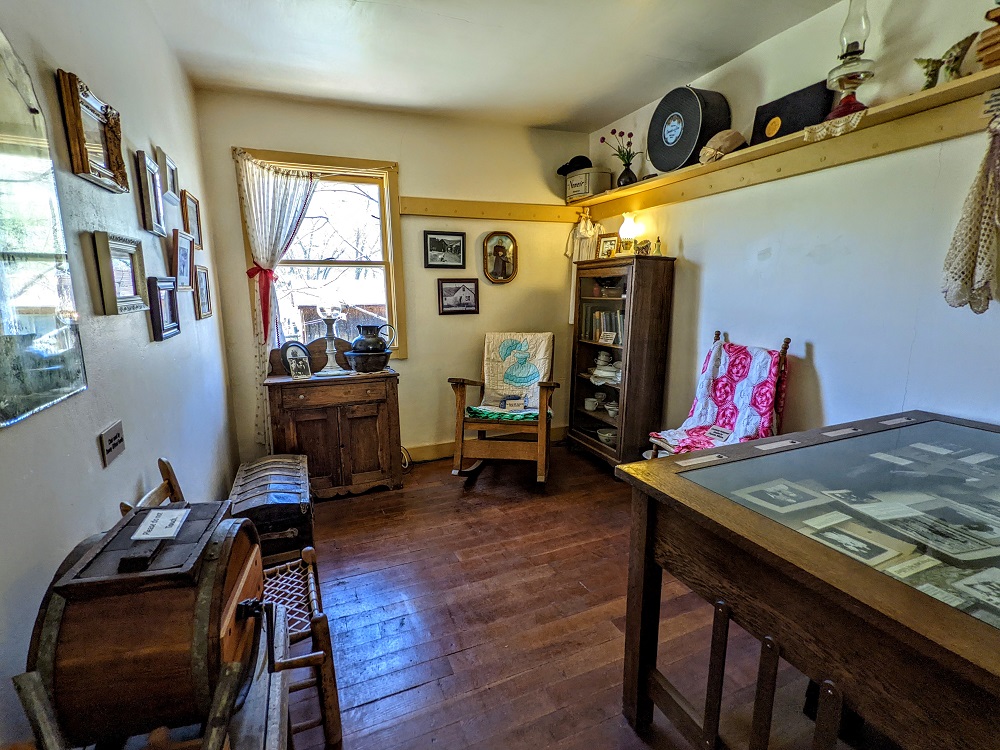
Opposite the homestead was the Fruita Barn which was built before World War I and seems to still be used to house horses today.
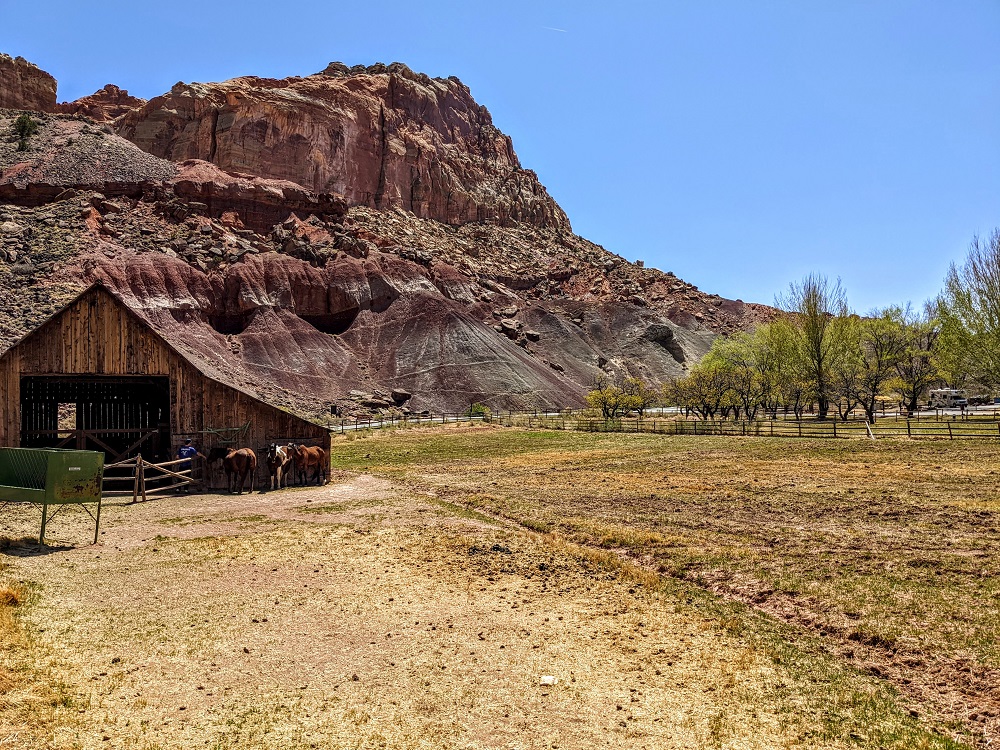
That was pretty much it for this history side of things in Fruita, so we hopped back in the car to continue driving down the 7.9 mile long Scenic Drive. There are some interesting rock formations along the way, including the Moenkopi formation seen below.
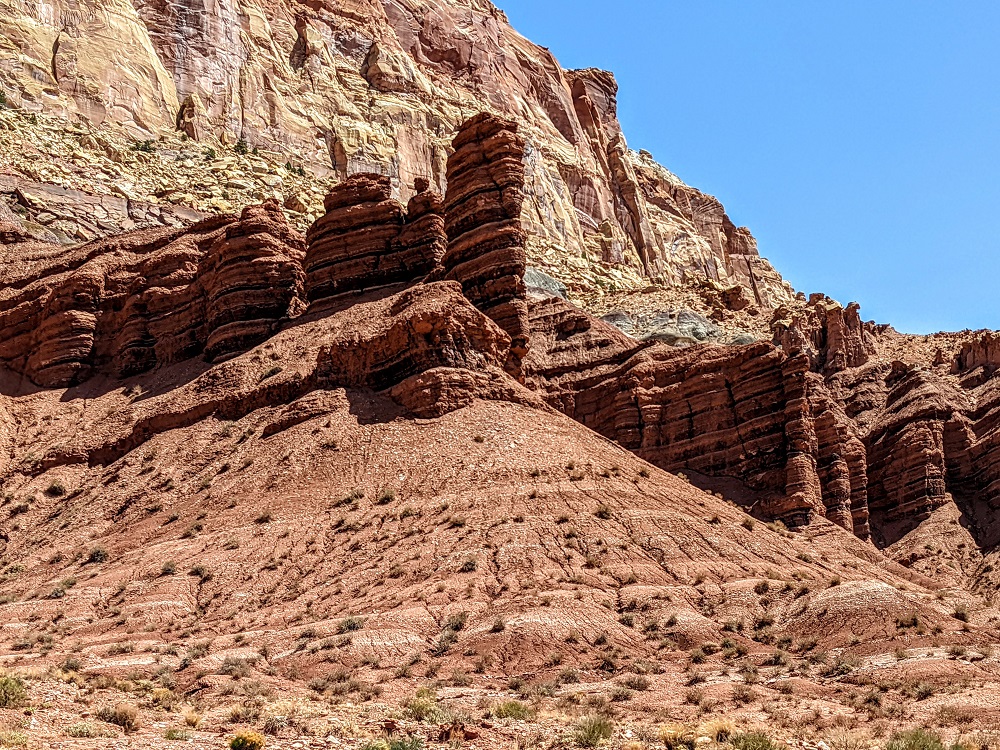
The Scenic Drive takes you along the Waterpocket Fold, an almost 100 mile long wall of stone.

Scenic Drive is paved the entire way and so can be driven in any kind of vehicle. If you have an off-road vehicle, there are a few dirt roads you can take off to the side to explore more of Capitol Reef National Park.
One such road is Capitol Gorge Road which is at the end of Scenic Drive. It used to connect some remote parts of Utah, although Highway 24 bypassed that in 1962 to provide better driving conditions.

We only have a 2004 Toyota Corolla though, so we weren’t equipped to go off-roading. As a result, we turned around at the end of Scenic Drive and drove back through the park, stopping off at one of the pull-offs so Shae could do a quick photoshoot with Truffles 😉
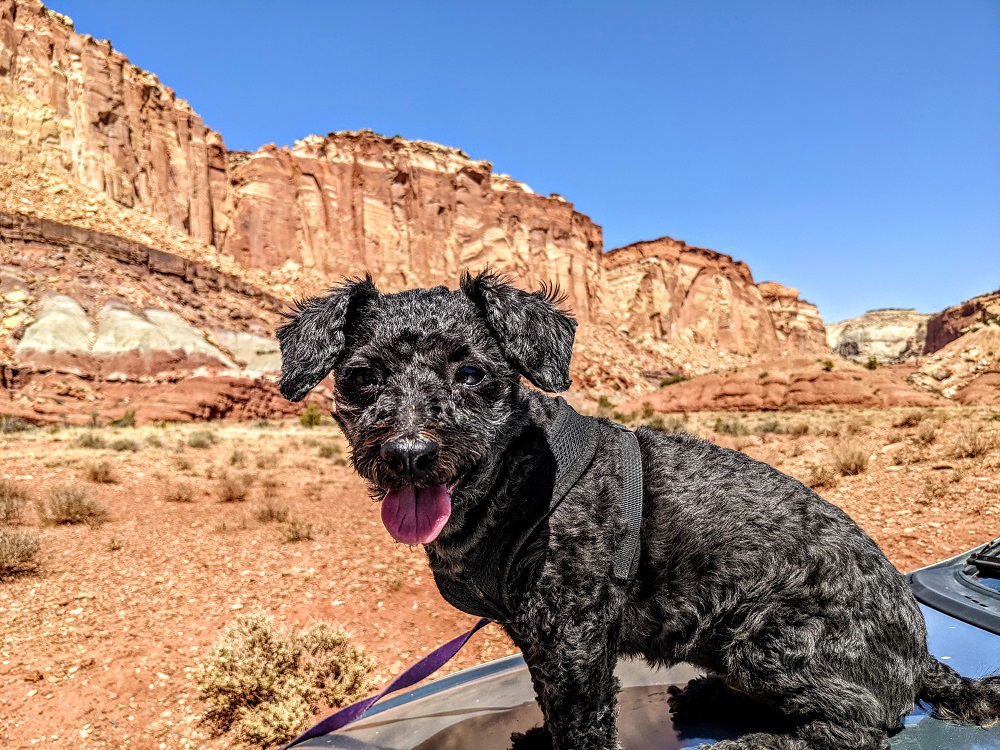
Is Capitol Reef National Park Pet Friendly?
Yes, to an extent and certainly more so than most of Utah’s other National Parks. Per the National Park website, dogs are allowed in the following places:
- On the trail from the visitor center to the Fruita Campground
- On the Fremont River Trail from the campground to the south end of Hattie’s Field (where there is a gate)
- In unfenced and/or unlocked orchards
- In the Chesnut and Doc Inglesby picnic areas
- In campgrounds
- Within 50 feet of center line of roads (paved and dirt) open to public vehicle travel
- Parking areas open to public vehicle travel
However, they’re not allowed on other hiking trails, in public buildings or in the backcountry. That meant we got to see a fair bit of Capitol Reef National Park with Truffles, but it did mean we couldn’t go hiking to see some of the park’s other attractions like Cassidy Arch.
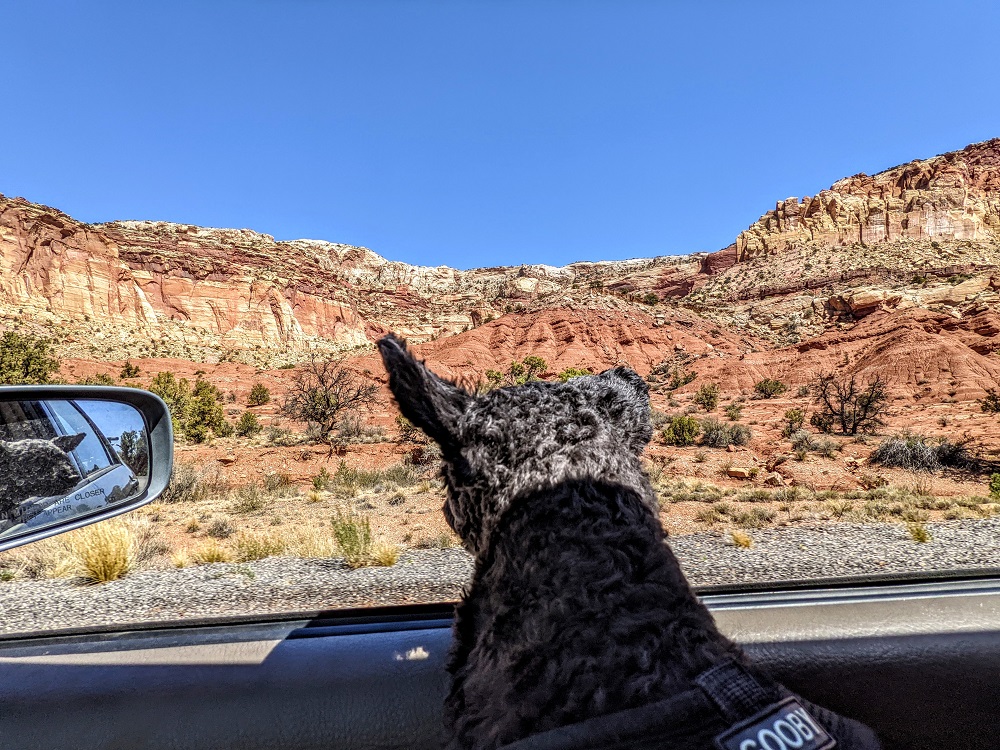
Final Thoughts
I’m glad we had an opportunity to visit Capitol Reef National Park while driving across the middle of Utah as we would’ve felt like we’d missed out if we hadn’t been able to hit all five of Utah’s National Parks.
Having said that, Capitol Reef was the least impressive of the five parks. Although it was pretty and had some interesting history, for me it wasn’t memorable in the way that the other four National Parks were.
Zion is immense, incredible and all kinds of other superlatives. Bryce Canyon is magical. Arches has more than 2,000 arches to see. Canyonlands is stunning and more impressive (in my opinion) than the Grand Canyon. Capitol Reef is somewhat dull in comparison to those other four National Parks of Utah.
Having said that, it might well be that we didn’t get to experience the best parts of Capitol Reef. Without an off-road vehicle, we couldn’t explore more remote parts of the park. Having our dog Truffles with us meant we couldn’t go on any hiking trails, so perhaps I’d have a different perspective of the park if we’d been able to experience even more of it.
We visited Capitol Reef in 2019. We enjoyed the scenic vistas, but the most memorable part for us was a night outing (just stopped on a remote dirt road) to gaze at the night sky. We didn’t plan it, but happened on a night with no moon and the Milky Way right across the top of the sky.
I can imagine the night sky there is amazing – it’s so far from any light pollution, that would be worth returning for.